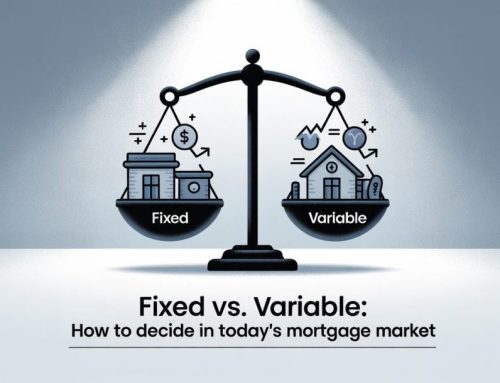In their 2nd scheduled rate announcement for 2022, the Bank of Canada confirmed this morning that they will be increasing their key policy rate (overnight rate) by 0.25%. The last time they increased their rate was on October 24, 2018.
Today’s increase affects anyone with a variable rate or a HELOC (Home Equity Line Of Credit). It does not affect fixed rate mortgages directly, however it can have an indirect effect on them.
Additional rate increases will follow.
The popular belief was right on track with the Bank’s decision, so this shouldn’t come as a surprise. We knew the increase was coming. It was just a matter whether it came on March 2nd, or in their following scheduled announcement on April 13th. As I mentioned in my February 9th blog, we may as well flip a coin as to which date (March 2nd or April 13th) the rate increase would come.
The unfortunate situation in Ukraine has since developed, which creates more economic uncertainty. This can obscure the BOC’s ability to predict the effect of the rate increase on our economy.
Consumer debt levels are also at record highs, which intensifies the impact of each rate increase.
The combination of consumer debt and uncertainty led me to believe that the Bank of Canada would consider holding their rate until April.
So why did they make the move?
Increasing inflationary pressures have now taken precedent over everything else. For this reason, the Bank of Canada felt compelled to move forward with the increase.
The following is an excerpt from this morning’s announcement:
“CPI inflation is currently at 5.1%, as expected in January, and remains well above the Bank’s target range. Price increases have become more pervasive, and measures of core inflation have all risen. Poor harvests and higher transportation costs have pushed up food prices. The invasion of Ukraine is putting further upward pressure on prices for both energy and food-related commodities. All told, inflation is now expected to be higher in the near term than projected in January. Persistently elevated inflation is increasing the risk that longer-run inflation expectations could drift upwards.”
The NEW Prime Rate
Now that the Bank of Canada has taken action, mortgage lenders will follow suit. I would expect all lenders to have increased their prime rate to 2.70% by the end of the week.
More Rate Increases Are Coming
It’s not a secret that the Bank of Canada is planning more rate increases for 2022, with some economists predicting as many as six. IF this happens, then the prime rate would increase by 1.50%, which would make the new rate 2.95%.
This is where it was in early 2020. It took the pandemic to drive it down to current levels.
As things start to return to normal, we can expect rates to do the same.
But what are the odds that we will see six rate increases this year?
While anything is possible, I don’t think it’s likely.
Given the record consumer debt levels, the economic impact of each rate increase is intensified. This means that fewer rate increases would be required for the Bank of Canada to reach their inflation target. It can take anywhere from 12-24 months for the full impact of each rate increase to be assessed. While some love to throw around the higher numbers to get attention, I believe three increases is a more reasonable expectation. Anything can happen, and we can only speculate based on what we know today.
Should You Convert Your Variable Rate Into A Fixed?
Whenever the Bank of Canada increases their rate, many start to think about converting to a fixed rate.
But is this a good idea?
Be careful who you take advice from as some will make it sound like the sky is falling. People tend to embellish and come to their own conclusions. This self-induced fear can turn to panic, which can lead to irrational and costly decisions. You may even have a friend telling you that you better lock in before it’s too late!
Don’t let their fear and panic influence your decision.
Always consider who the advice is coming from, as everyone seems to think they are an expert when it comes to mortgages.
Mortgage lenders love it when people convert their variable rates into fixed. It’s great for them, but can be costly to you.
I would recommend checking out my recent blog on Converting Your Variable Rate Into a Fixed, which will provide you with some additional insight.
Always check with us before making any decisions. You can always count on us for consistent and trustworthy advice. The same guidance as we would give our own mothers. It’s this level of professional service that has led us to becoming of the top mortgage brokers in Canada.
Conclusion
Even with today’s increase, the spread between fixed and variable is still larger than it’s been in years, which gives you added protection against rising rates. As long as you are mentally and strategically prepared for the increases to come, variable rate mortgages are still a great choice.
I would also recommend reading my following blogs:
How Many Rate Increases Are Sustainable
Are Variable Rates Still A Good Choice?
The Ultimate Guide To Choosing Fixed Vs. Variable
How To Prepare For Higher Mortgage Rates








Leave A Comment